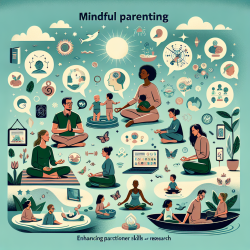Introduction
Virtual Reality (VR) has emerged as a transformative technology across various domains, including medicine, psychotherapy, and now, software engineering. A recent study titled "The Human Experience of Comprehending Source Code in Virtual Reality" explores the potential of VR in enhancing code comprehension among programmers. As a speech-language pathologist, you might wonder how these findings could be relevant to your practice. This blog delves into the study's insights and suggests how VR could be leveraged to improve outcomes in speech-language pathology.
Understanding the Study
The study conducted by Dominic et al. (2022) involved 26 graduate student programmers who were tasked with comprehending source code in both VR and traditional desktop environments. The researchers measured productivity, perceived productivity, and task load using the NASA Task Load Index (TLX). Interestingly, while VR did not significantly enhance productivity, it did increase physical demand and overall task load.
Key Findings
- Programmers in VR reported higher physical demand and effort.
- There was no significant difference in measured or perceived productivity between VR and desktop environments.
- VR environments can potentially reduce distractions, which is beneficial for focused tasks.
Implications for Speech-Language Pathology
While the study focuses on software engineering, its findings can inspire innovative approaches in speech-language pathology. Here are a few ways VR could be integrated into your practice:
- Enhanced Engagement: VR can create immersive environments that engage children in speech therapy activities, making learning more enjoyable and effective.
- Distraction-Free Settings: Similar to software engineers, children can benefit from VR's ability to minimize distractions, allowing for more focused therapy sessions.
- Simulated Real-Life Scenarios: VR can simulate real-life situations where children can practice speech and language skills in a controlled environment.
Encouraging Further Research
The potential of VR in speech-language pathology is vast, yet underexplored. Encouraging further research could lead to significant advancements in therapy techniques. Consider collaborating with researchers to explore how VR can be tailored to meet the specific needs of speech-language pathology.
Conclusion
While the study by Dominic et al. highlights the challenges of using VR in software engineering, it also opens up exciting possibilities for other fields, including speech-language pathology. By embracing VR, practitioners can enhance therapy outcomes, making sessions more engaging and effective for children. As we continue to explore the potential of VR, it's crucial to stay informed and consider how these technological advancements can be integrated into our practices.
To read the original research paper, please follow this link: The human experience of comprehending source code in virtual reality.










